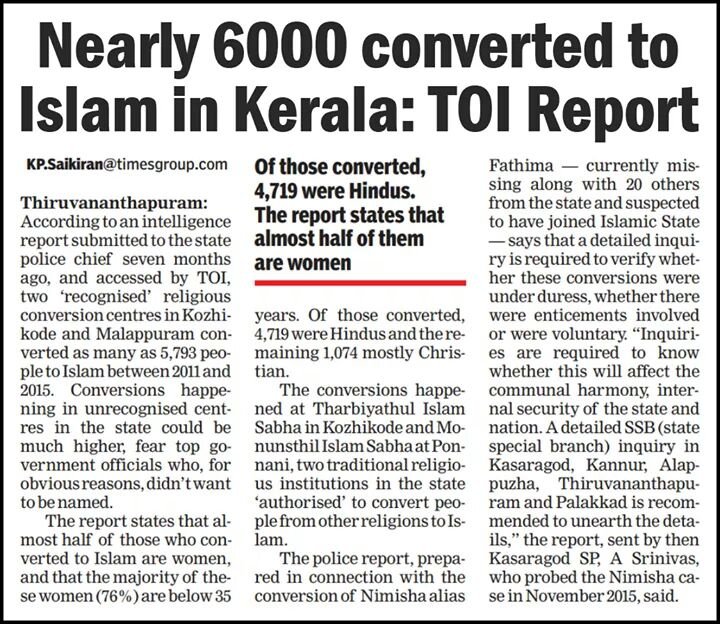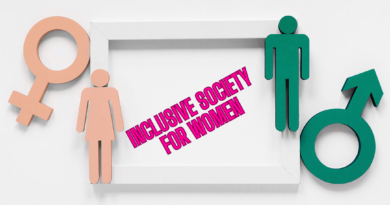The Kerala Story – Legit or Myth | Ias Banenge
The film “The Kerala Story” has generated significant controversy in India due to its portrayal of Hindu and Christian women being lured into joining the Islamic State (IS) group. Set in the southern state of Kerala, the movie has faced criticism from opposition politicians, who have accused it of being propaganda and an attempt to fuel religious tensions.
The controversy surrounding the film stems from concerns about the potential for spreading divisive narratives and promoting religious disharmony. Opponents argue that the movie may perpetuate stereotypes, reinforce prejudices, and create a negative image of certain religious communities. They believe that such portrayals can contribute to social unrest and undermine the harmonious coexistence of different religious groups in Kerala.
Critics of the film question its factual accuracy and object to what they perceive as an attempt to exploit sensitive issues for commercial gain or political motives. They argue that the story’s focus on Hindu and Christian women joining the Islamic State group may oversimplify complex social dynamics and contribute to stigmatizing particular communities.
However, it is essential to remember that the controversy surrounding a film does not necessarily reflect its content or intent accurately. Without further information about “The Kerala Story” and its specific portrayal of the subject matter, it is challenging to make definitive judgments about the film’s merits or potential biases.
READ MORE – Coal Mines (Nationalisation) Act 1973-Ias Banenge
Plot of Movie – The Kerala Story
“The Kerala Story” is a movie that portrays the experiences of three young girls from different regions of Kerala, with a particular emphasis on Shalini’s story. Shalini’s journey takes a dramatic turn when she is abducted and coerced into converting to Islam. Subsequently, she becomes radicalized and is compelled to join the terrorist organization ISIS.
The movie explores the complex themes of abduction, religious conversion, radicalization, and the lure of extremist ideologies. It delves into the psychological and emotional transformation of Shalini, highlighting the challenges she faces and the circumstances that lead her to join a terrorist organization.
Reality Behind the Movie – The Kerala Story
The movie which was recently released has received both acclamation and criticism from different sections of the society.
Several politicians in Kerala and Muslim leaders have alleged that the film would disturb religious harmony, demonise Muslims and peddle Islamophobia and may bring insult to the southern state.
The movie sparked controversy when it first claimed that 32,000 women in Kerala were forced to convert to Islam and they joined ISIS. Later, the movie makers retracted and changed the movie’s description on YouTube saying it’s a story of three women.
The movie shows lot of violence like rape culture, chopping of hands, beheading and trauma caused to innocent women are shown in a brutal manner.
Keralites have also opposed the movie and ran different social media campaigns narrating different stories of religious harmony in the state.
In the midst of this all, a woman has claimed that the movie shows her real-life story. Calling the film accurate, Shruti from Kasargod claimed that she was one of the victims who befriended Muslim girls in college and converted to Islam.
READ MORE- India’s Strategic Nuclear Gamble Worked-Ias Banenge
#TheKeralaStory is 100% inspired from real life events.
— Incognito (@Incognito_qfs) May 6, 2023
Some people will stay say she was blowing air (dua) on her father. 🤲 pic.twitter.com/N0NgC3Axxk
In an interview with ABP news, Shruti, a Brahmin woman, revealed she was brainwashed into converting to Islam by her Muslim girls who were her college friends. She changed her name to Rahmat.
Amid ongoing political slugfest over the movie, ‘The Kerala Story’, which is based on the untold story of radicalization and trafficking of girls to germinate terror, Shruti, a victim of forceful religious conversion who was lured into Islam, backed the movie and said that ‘it… pic.twitter.com/CUTM6NE64U
— Eagle Eye (@SortedEagle) May 5, 2023
No evidence to back 32,000-claim
Alt News found an interview of Sudipto Sen on YouTube channel ‘The Festival of Bharat’ where he talks about how he calculated the figure. From the 45-second mark onward, he says, “In 2010, former Kerala CM Oommen Chandy put a report in front of Kerala assembly. In front of my camera, he denied that anything had happened. But in 2010, I documented a case where he (Chandy) said that every year approximately 2,800 to 3,200 girls were taking up Islam. Just calculate it for the following 10 years, and the number is around 32,000.”
Even though there was not enough evidence to conclude the reality but there were some FIR filed and case was registered and one of the case among them are
Shahan Sha A vs State Of Kerala on 9 December, 2009
Hadiya Marriage Case: Shafin Jahan v/s Asokan K.M

Since there is a lot of event happening in this and no official statement is released by any authorities we cannot conclude to any conclusion but there has been claim by several person (name not disclose) that the Real life Kerala story girl is in Afganistan Jail with her daughter which legitimate the topic but no evidence proof is their to support the 32000 number.
Recent Development on Movie
- Movie has been released pan India on May 5 and got “A” certificate from the CBFC
- Movie got banned in West Bengal.
- Theatre owner stopped the screening of the film in Tamil Nadu
- The Supreme Court today sought to know the rationale behind ‘The Kerala Story’ movie being banned in West Bengal when it is running across the country without any problem.
Film Certification Rule in India
Film certification in India is governed by the Cinematograph Act, 1952, and the rules and guidelines framed under it. The Central Board of Film Certification (CBFC), commonly known as the Censor Board, is the statutory body responsible for certifying films in India. The primary objective of film certification is to ensure that films are suitable for public exhibition while balancing artistic freedom and the need to uphold certain standards.
Here are some key aspects of the film certification process in India:
Categories: Films in India are certified under various categories that indicate the suitability for different age groups. The categories are as follows:
a. U (Universal): Films suitable for all age groups.
b. U/A (Universal/Adult): Films suitable for all age groups but with some cautionary elements that may require parental guidance.
c. A (Adult): Films restricted to viewers above 18 years of age.
Certification Process: Producers or distributors must submit their films to the CBFC for certification before public exhibition. The board examines the film’s content and considers various factors such as language, visuals, violence, nudity, and themes. The examination process aims to ensure compliance with the Cinematograph Act and the guidelines issued by the government.
Guidelines: The CBFC follows certain guidelines, commonly known as the “Censor Board Guidelines,” while evaluating films. These guidelines provide a framework for assessing films based on factors such as violence, sexual content, obscenity, and religious sentiments. The intent is to balance creative freedom with the responsibility to protect public interest and maintain social harmony.
Modifications and Censorship: During the certification process, the CBFC may suggest modifications or cuts to scenes or dialogues deemed inappropriate or offensive. This may be done to comply with the guidelines or to address concerns raised by the examining committee. Filmmakers can accept the suggested modifications or appeal to a revising committee if they disagree with the decision.
Certification Decision: After the examination and any required modifications, the CBFC grants the film a certificate indicating the appropriate category. The certificate enables the film’s public exhibition in theaters, television, or digital platforms.
It is important to note that film certification in India has been a subject of debate and discussion, with concerns raised about the potential curtailment of artistic freedom and the subjective nature of censorship decisions. However, efforts have been made to streamline the process and make it more transparent and accountable.
It is advisable for filmmakers to be aware of the guidelines and requirements set by the CBFC while developing and producing their films to ensure a smoother certification process.
Rules for Religious Conversion in India
Religious conversion in India is subject to certain rules and regulations, which vary depending on the state and the religious community involved. It is important to note that religious freedom is a fundamental right protected by the Indian Constitution. However, states have enacted laws to regulate or require documentation for religious conversion, primarily to prevent forced or fraudulent conversions. Here are some key points regarding religious conversion in India:
State Laws: Several states in India have enacted laws commonly known as “Anti-Conversion Laws” or “Freedom of Religion Acts” that regulate or require documentation for religious conversions. These laws vary in their provisions and are primarily aimed at preventing forced conversions or conversions through fraudulent means. It is essential to consult the specific state laws applicable in the concerned region to understand the requirements and procedures.
Consent and Intent: In general, voluntary religious conversions require the consent and intent of the individual involved. The person seeking to convert should do so out of their free will and without any undue influence, coercion, or inducement. Forced conversions or conversions under duress are prohibited.
Documentation: Some states require individuals undergoing religious conversion to provide prior intimation or submit documentation to the concerned authorities. This can include filing a formal declaration or seeking permission from the district administration or relevant government body. The specific procedures and requirements differ from state to state.
Approval and Scrutiny: Depending on the state laws, religious conversions may be subject to scrutiny by government officials or designated bodies. The purpose of scrutiny is to verify that the conversion is voluntary and complies with the applicable laws and regulations. The scrutiny process may involve interviews, investigations, or inquiries to ensure that the conversion is not coerced or fraudulent.
Penalties and Consequences: Violation of the laws regulating religious conversion can lead to legal consequences, including fines, imprisonment, or the annulment of the conversion. It is crucial to adhere to the legal requirements and procedures to ensure that religious conversions are conducted within the framework of the law.
Disclaimer: The following article is intended solely for educational purposes and aims to provide general information. The content of this article has been compiled from various sources, and the author does not endorse or make any personal statements in this regard. It is important to note that the information presented may not necessarily reflect the views, beliefs, or practices of any specific religion or religious community. The author acknowledges and respects the diversity of religious beliefs and understands the sensitivity surrounding religious topics. It is not the intention of the author to hurt or offend the sentiments of any religious group or individuals. If any part of the article inadvertently does so, it is purely unintentional. Readers are encouraged to conduct further research and consult relevant religious authorities for a comprehensive understanding of specific religious matters. The author and publisher shall not be held liable for any misinterpretation, harm, or offense caused as a result of reading this article.





Pingback: How Regenerative Agriculture Can Prevent Soil Decay|Ias Banenge